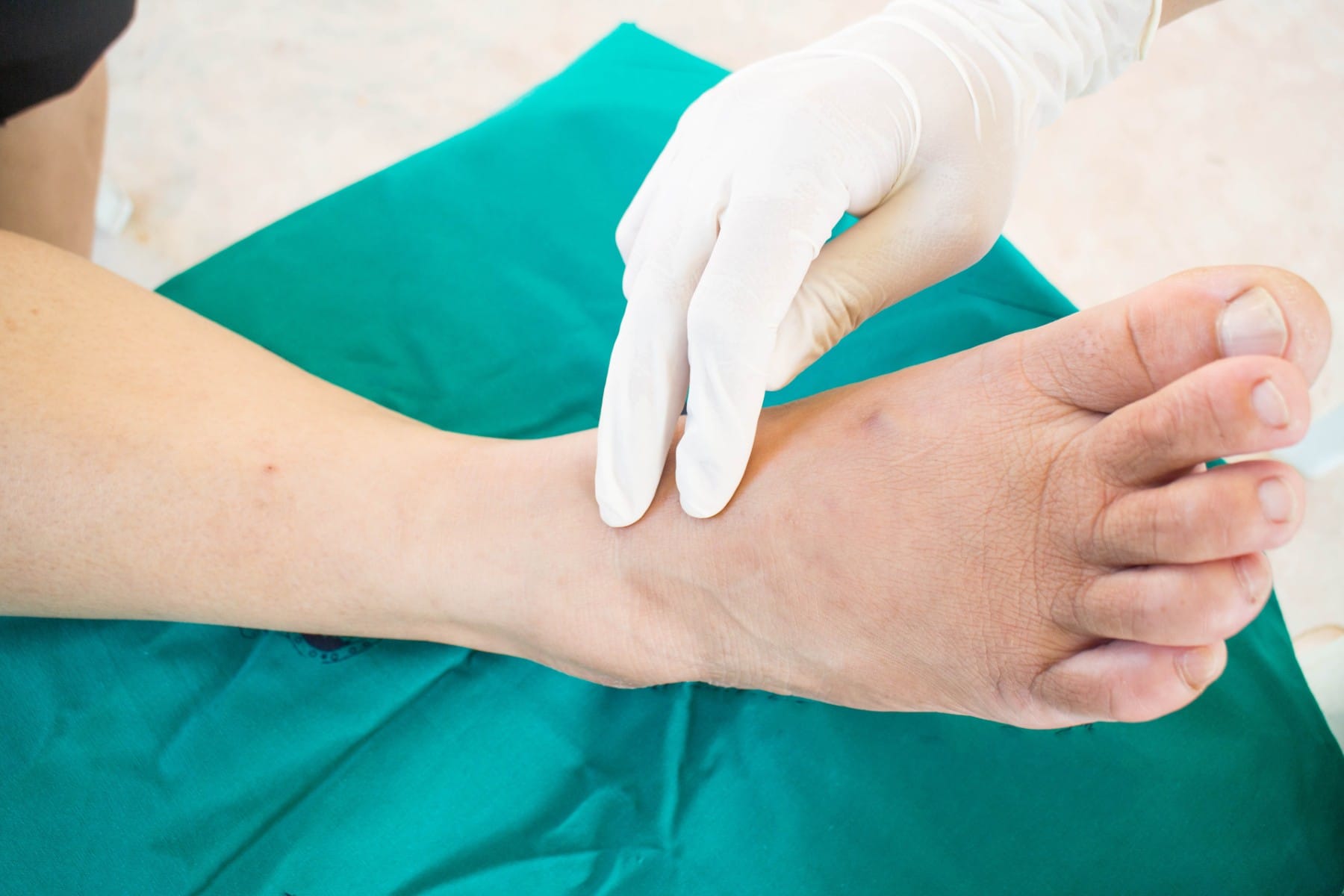Charcot Foot
Charcot foot is a severe and dangerous condition that can result from complications due to diabetes, nerve damage, and/or poor circulation in the feet.
Charcot foot develops when a weakened foot structure deforms, breaks, and collapses under continuous strain. In severe cases, patients can have their ability to walk greatly impeded, a greater risk of ulcers, and a much higher risk of requiring amputation.
The best way to address Charcot foot is to detect and address the factors that can lead to it, keeping it from developing in the first place. And if the symptoms of Charcot foot are present, treating them as soon as possible is essential to saving a patient’s mobility – and the foot itself.
What is Charcot Foot?
Charcot foot is a degenerative condition in which the bones, joints, and connective tissues of the foot or ankle become weakened. The structure of the foot can begin to collapse, causing dislocations and deformities. The foot itself often takes on a “rocker bottom” shape.
As the foot becomes deformed, walking can become more difficult and areas of high pressure can form, leading to a much greater likelihood of sores and ulcers developing. Such ulcers can become easily infected, increasing the risk of serious complications.
Charcot foot is often closely tied to peripheral neuropathy (i.e. nerve damage) in the feet. Peripheral neuropathy itself is often an accompanying effect of diabetes, and people who have one or both conditions are more prone to having weaker bones.
Additionally, advanced nerve damage can lead to a loss of sensation in the feet – so severe that even fractures and large injuries can go unnoticed. Someone may not even be aware of the collapse of their foot structure or its extent, continuing to walk on a broken foot and incurring even greater damage.
Early Detection of Charcot Foot is Key
Anyone who has been diagnosed with diabetes and/or peripheral neuropathy should be taking time each day to examine their feet for signs of problems. This is true even for anyone whose foot health feels perfectly fine. The more you know about how your feet should look and feel, the better you will be able to tell when something isn’t right.
If you notice any of the following, it may be an early sign of trauma that could result in Charcot foot. Notify us right away of any:
- Swelling
- Redness
- Skin that is warmer to the touch than normal
- Noticeable pain, aching, or soreness (especially if you know you have a significant loss of sensation)
If you have advanced neuropathy, remember that pain will often not be your best indicator of a problem. You must look and feel.
Additionally, preventative care does not need to begin before your nerves or circulation have been significantly impacted. Our practice specializes in testing to monitor both, including PSSD Nerve Testing and PADnet Vascular Testing.
The better we can keep track of your circulation and neurological health, the more ready we can be to identify and address potential complications as soon as possible, heading off the development of Charcot foot at the pass.
Treating Charcot Foot
Every case of Charcot foot must be taken very seriously. At Advanced Foot & Ankle, we will do everything we can to prevent further collapse of the foot and avoid any need for amputation.
Following a full evaluation to determine the extent of damage to the foot, we will make recommendations for treatment and recovery.
In more minor cases, Charcot foot could be addressed through conservative means. The foot may be immobilized with a cast or brace, and all allowances should be made to provide it every opportunity to heal. We will closely monitor the progress of recovery, adjusting treatment as necessary. If the bones continue to heal, the cast or brace could be changed to a walking boot or specialized shoes.
When severe structural damage is present, however, surgery may be a necessity to reconstruct the foot and ankle.
Whether addressed conservatively or surgically, however, it remains essential to take any further steps necessary to prevent further damage and collapse. The plan for doing so may look different from patient to patient, and we will discuss our best recommendations and options.
Preventing Severe Diabetic Complications Begins Now
We are ready to help any patient with Charcot foot find fast treatment, but preventing such a situation from arising will always be the preferable option. A good diabetic care plan can very much mean the difference between good health and mobility or the loss of a foot.
Your diabetic foot care is not something to leave to chance. Early and consistent action is key. Schedule an appointment with Advanced Foot & Ankle by calling our offices or by filling out our online contact form.

